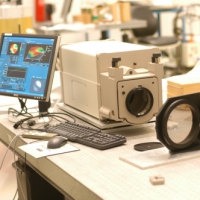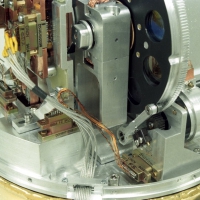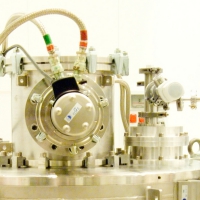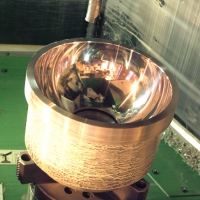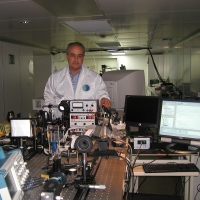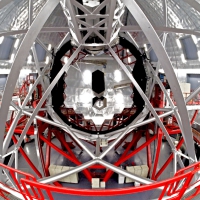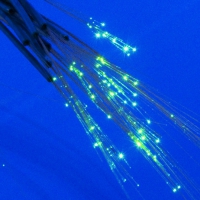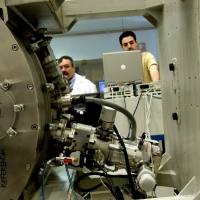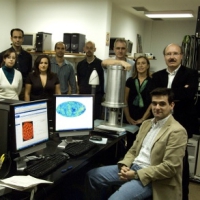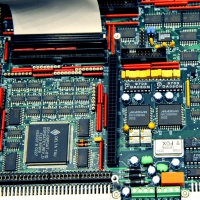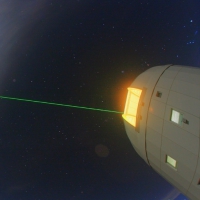Capabilities
The IAC develops much of the technology for its astronomical research activities in-house. As a result the IAC has become highly proficient in some of the most important areas of knowledge and technology for scientific instrument development. These technical capabilities are made available to outside organisations as part of the IAC's commitment to other technological and industrial sectors.
|
The IAC's engineering team has already worked on many scientific instruments with optical systems that were designed in-house, like CAIN, INTEGRAL, LIRIS and OSIRIS. They are currently working on new instruments including EMIR for the GTC, ESPRESSO for the shared focus of the 4 ESO large telescopes (VLT), the optical system for the European Solar Telescope (EST) and numerous other projects. |
|
|
|
The IAC's engineering team has already worked on many scientific instruments with optical systems that were designed in-house. The experience gained from these projects is continually being drawn upon, with more than thirty R&D projects currently under way in the Division, as well as being added to through joint projects with other national and international bodies and specialist training programmes for the IAC's technical staff. |
||
| |
The IAC has wide experience of developing open, closed and hybrid cycle infrared instruments. In hybrid cycle instruments, liquid nitrogen is normally used to pre-cool the whole instrument, with a mechanical cooler keeping it in cryogenic conditions. The IAC also has significant experience of: Designing and building vacuum cameras, Designing cooling systems and radiation screens, Cryomechanics, Designing cryogenic opto-mechanical systems and Thermo mechanical analysis. |
|
|
The Technology Division has very wide experience of precision mechanics, from the initial design phase to assembly of complex systems and the component validation and testing phases in between. The IAC produces components for prototypes in development at its own facilities, and tests their compliance with design specifications, generally relating to relate to size, shape and surface quality. |
||
|
Adaptive Optics (AO) is an advanced technique that corrects the effects of the earth's atmosphere on astronomical images. It works by placing one or several deformable mirrors along the optical path travelled by light in a telescope. The shape of the mirrors can be altered using electronically controlled actuators. The Technology Division has accumulated expertise in several projects which incorporate AO. |
||
|
The IAC has been testing the different wave front sensors used to observe with segmented mirror telescopes for some time in order to find ways to measure and correct any misalignment between the different mirror segments. Currently there are a number of different Shack-Hartmann wave front sensor based solutions in existence, such as curved and pyramid. The Hawaiian KECK telescope and the Gran Telescopio de CANARIAS (GTC) at La Palma are segmented telescopes with co phasing sensors. The IAC is also a partner in developing similar technology for the future E-ELT. |
||
|
The IAC's engineering team's experience with fibre optics has been gained by developing instruments for projects like HEXAFLEX and INTEGRAL; the latter was conceived, built and managed entirely by the IAC as part of an international joint project with the Royal Greenwich Observatory (RGO) and the Isaac Newton Group of Telescopes (ING). INTEGRAL can perform spectroscopy on 200 regions containing a wide range of astronomical objects simultaneously. |
||
|
The IAC's expertise in this area mean that it can undertake work on all aspects of control systems, from dedicated low-noise analogue electronics and extremely high speed digital electronics to modelling high level software. This includes, where necessary, designing and implementing mechanism control rules and algorithms and simulating dynamic systems. |
||
|
Industry is now able to produce sensors with additional features only needed for the most advanced scientific equipment. These devices must be characterised before they can be used, through a series of experiments designed to gather information about the way they perform. This process is called sensor characterisation. The IAC's engineering team's qualified in this field can also characterise infrared wavelength sensors. Infrared sensors require vacuum and cryogenic systems and must therefore be characterised at locations where these resources are available, which are used for many purposes at the IAC. |
||
|
IAC personnel have wide experience of managing R&D projects. The Instrumentation Area in particular develops instruments from the initial proposal and concept stages through design and manufacture to assembly and commissioning at the telescope. Engineering staff, organised in a matrix structure of departments with different technical specialisms, work in multidisciplinary project teams in which specific personnel are responsible for project management and technical direction, ensuring compliance with specifications and delivering the project to the brief, in budget and on time. |
|
|
|
The IAC has experience of designing and developing all kinds of electronic components for scientific instruments. We have particularly strong experience of digital and analogue device control and real-time data acquisition and processing system design. In addition, we design reading, processing, control, sensor characterisation and general astronomy devices and servo control mechanisms. The IAC has the experience and resources to develop and simulate FPGA (Field Programmable Gate Array) based systems, which are at the cutting edge of electronic processing solutions. |
|
|
|
The IAC jointly developed experimental first generation terminals for optical communications between satellites. The IAC's contribution was to the commissioning systems for earth bound terminals. The first of these is SILEX, which uses an experimental link between the ARTEMIS satellite, in geostationary orbit, and France's SPOT IV satellite, in a low orbit (some 700 km), to transmit data from observations of our planet. This will be used in the search for new natural resources, for environmental studies and pollution control, preventing and controlling catastrophes and for cartography. |
|
